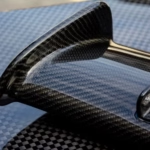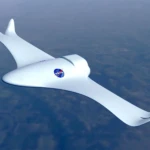Beyond the limits: Unlock creative freedom with 5-axis CNC wood processing
The world of woodworking has been transformed through computer numerical control (CNC) technology, far beyond simple flat shears and repeated contours. Although the 3-axis machine performs well on many tasks, the true pinnacle of precision and creativity lies in 5-axis CNC machining. If you are pushing the boundaries of furniture design, intricate sculpture, architectural mill or custom components, this technology is more than an upgrade – it is a revolution.
Why 5-axis? It’s all about movement (possibility)
Imagine a standard 3-axis CNC router. It moves the cutting tool along the familiar X, Y and Z axes: left/right, forward/back/up/down. This is very powerful, but has limitations. Complex curves, deep undercuts and true 3D surfaces often require multiple settings, repositioning of the workpiece and complex fixation. This introduces the potential of errors, increases production time and limits achievable geometry.
one 5-axis CNC machine Add two rotation axes (usually referred to as A and B or C) on this basis. This allows the cutting tool to actually go from Any angleand the workpiece itself may also rotate. Think of it as having a highly skilled carpenter who can instinctively and accurately tilt the carving tools and The wood blocks themselves reach the most complex outline at the same time.
Real benefits for wood professionals:
- Complex geometric shapes make it simple: Processing deep undercuts, composite curves, organic 3D shapes such as ergonomic handles or sculptural elements, and the holy grail of complex 3D embossed carvings can be achieved in a single setup.
- Unrivaled accuracy and surface surface: By maintaining the optimal tool orientation relative to the wood grain and surface throughout the cutting process, the 5-axis machining minimizes tool deflection and has complex details that allow for surface finishing effects. The complex transitions become smoother.
- Significantly reduces the setup time: It is now often possible to operate continuously to complete complex parts that previously required multiple fixtures and manual repositioning. This cuts labor costs and eliminates the risk of misalignment between settings.
- Minimize tool marking and deflection: Optimal tool angle control reduces phenomenon "Stair steps" Steep angles can be extended with shorter, more rigid tools where needed, resulting in clearer details and less handwork.
- Effective material utilization: Advanced nesting software combined with multi-directional cut access allows for more efficient layout on raw material inventory, minimizing output and reducing waste.
Greatlight™: Your outstanding partner in advanced wood processing
Greatlight™ With state-of-the-art 5-axis CNC technology, it is tailored to wood and wood composites with excellent accuracy and artistic quality. Our commitment is more than simply running machines:
- 5-axis center of tip: We invest in high-precision, high-stability machinery designed to ensure consistent accuracy even in complex geometric shapes.
- Material mastery: From stable hardwoods (oak, maple, walnut) and exotic species (mahogany, teak) to composites (MDF, plywood), high-density panels and engineered wood, we understand their unique processing characteristics and adjust the process accordingly.
- Engineering and CAD/CAM expertise: Our team has deep expertise in converting complex 3D models (steps, IGES, STL) into optimized tool paths that maximize the functionality of 5-axis machining while ensuring efficiency and quality.
- Design cooperation: Being stuck in manufacturing? We actively worked with designers and engineers early in the process to refine the concept for the best CNC success.
- Comprehensive completion service: Be loyal to us "One-stop" Committed, we offer a comprehensive post-treatment: meticulous polishing, seamless assembly, dedicated decor (dying, sealing, varnishing, painting) and custom hardware integration to deliver ready-made work.
- Speed and reliability: Need a rapid prototype or production on the deadline? Our advanced equipment and simplified processes ensure fast turnaround time without sacrificing quality.
- Competitive customization: Whether it’s one-time custom pieces or medium batches, we can offer tailor-made solutions at competitive prices.
When does your project require 5 axes?
When your project involves, consider 5-axis CNC machining:
- Complex building components: Decorative shape with complex contours, curved stair parts, vaulted ceiling panels.
- High-end furniture: Design with flow curves, complex joinery with angles, sculptural elements, complex legs and arms.
- Signage and Brand: Deep 3D logo, intricate embossed signage, unique size letters.
- Musical instrument: The body, the neck (especially the bedside table), the bridge needs precise compound shapes.
- Sculptures and works of art: Organic shapes, deep-bottom cutting or any form of non-repeating surfaces are essential.
- Prototypes and models: A highly accurate physical representation of complex designs was quickly created.
Successful design: Tips for 5-axis wood processing
- Understanding Undercut and Clearing: Clearly communicate deep pocket and internal functions to ensure tool accessibility.
- Thinking tool size: Very detailed details require smaller tools, which affects processing time and method.
- Model Accuracy: Provide clean watertight CAD files and provide all necessary details. Consider tolerances and key dimensions.
- Consider fixed: Although the 5-axis reduces the setup, dedicated fixtures may still be required for stability during complex movements. Early discussions are helpful.
- Embrace angle: Thinking about the plane beyond the plane. Use axis freedom to optimize strength (along the grain) and aesthetics.
Conclusion: Shaping the future of wood products, one axis at a time
5-axis CNC machining represents the cutting-edge of digital wood manufacturing. It frees designers and manufacturers from the limitations of simple machines, thus maintaining a level of complexity, precision and finish efficiency that was previously unachievable or expensive. Whether you are producing museum-quality artwork, custom designer furniture or important architectural elements, you need perfection Greatlight™ Unlocked this potential.
We don’t just cut wood. We carved the possibilities. With advanced 5-axis capabilities, rigorous engineering expertise, and a commitment to one-stop quality, we transform complex digital concepts into stunning wooden reality. Ready to experience the freedom of 5 axis? Contact Greatlight™ today to consult your next ambitious wood project. Let’s create something extraordinary together.
FAQ: 5-axis CNC wood processing with Greatlight™
Question 1: My project has some complex curves and undercuts, but I’m not sure if need 5 axes. How do I know?
A: If creating your part requires flip, rotate, or using multiple dedicated fixtures on a 3-axis machine, it is almost certainly more efficient and more accurate. It eliminates setup errors and handles internal geometry smoothly. Send us your model for feasibility assessment – we will honestly suggest the best and most cost-effective approach.
Q2: Is 5-axis CNC machining much higher than 3-axis?
A: It depends. this Machine time Due to complex tool paths, it can sometimes be higher. However, the significant cost savings come from:
- Eliminate multiple settings: Save a lot of labor and fixed costs.
- Reduced minor treatments: The surface finishes above usually need to be much less.
- Less discarded parts: The chance of error between settings is smaller, meaning higher first frequent output.
For complex geometry, 5-axis is usually the most economical choice overall. We offer transparent quotes and compare methods where possible.
Q3: What file format is required for 5-axis processing?
A: We prefer native CAD files like STEP (AP203/AP214), IGES or SOLID model files (e.g., .sldprt, .prt) because they retain the most design intelligence. Surface files like STL are available, but more preparation is required. A clean, well-structured model is crucial. Let us know your source software.
Q4: Can you be mechanically exotic or very dense woods?
Answer: Absolute. Our 5-axis machine is powerful and rigid. We have experience in processing a wide variety of woods, including hard appearances such as ebony, woody wood and Cocobolo, as well as high-density materials such as MDF, HDF and COMPOSITES. We have adjusted feeds, speeds, tools, and strategies specifically for the properties of each material.
Question 5: Are you providing design assistance? I have an idea, but not a finalized CAD model.
Answer: Yes! We provide collaborative design and engineering services. Share your sketch, concept or rough model. Our team can help you refine your design for optimal productivity on 5-axis mills, suggest material selection, propose detailed improvements, and potentially create the final manufacturing ready CAD model.
Question 6: What is the typical lead time for a 5-axis wood project?
A: Delivery times vary based on design complexity, material availability, project size and our current workload. We prioritize rapid prototyping and provide competitive production times. Contact us with your specific project details and we will provide a clear schedule estimate. Our processes have been optimized for efficiency.
Q7: How good is the details to achieve with 5 axes on wood?
A: Details are exceptions, mainly due to geometry, the size of the tools we can use (the gadget requires a slower pass) and the stability of the wood itself. We have obtained intricate details such as fine textures, sharp arrivals and intricate wooden slots. Discuss your detailed requirements with us.
Question 8: Is this process much larger than 3-axis routing?
A: The noise level is similar to high-performance 3-axis routing, and it depends more on the spindle speed, feed rate and type of cutting than the number of axes. Aggressive roughness is naturally greater than a delicate finish. Processing certain dense composite materials may also be larger than solid wood.

















